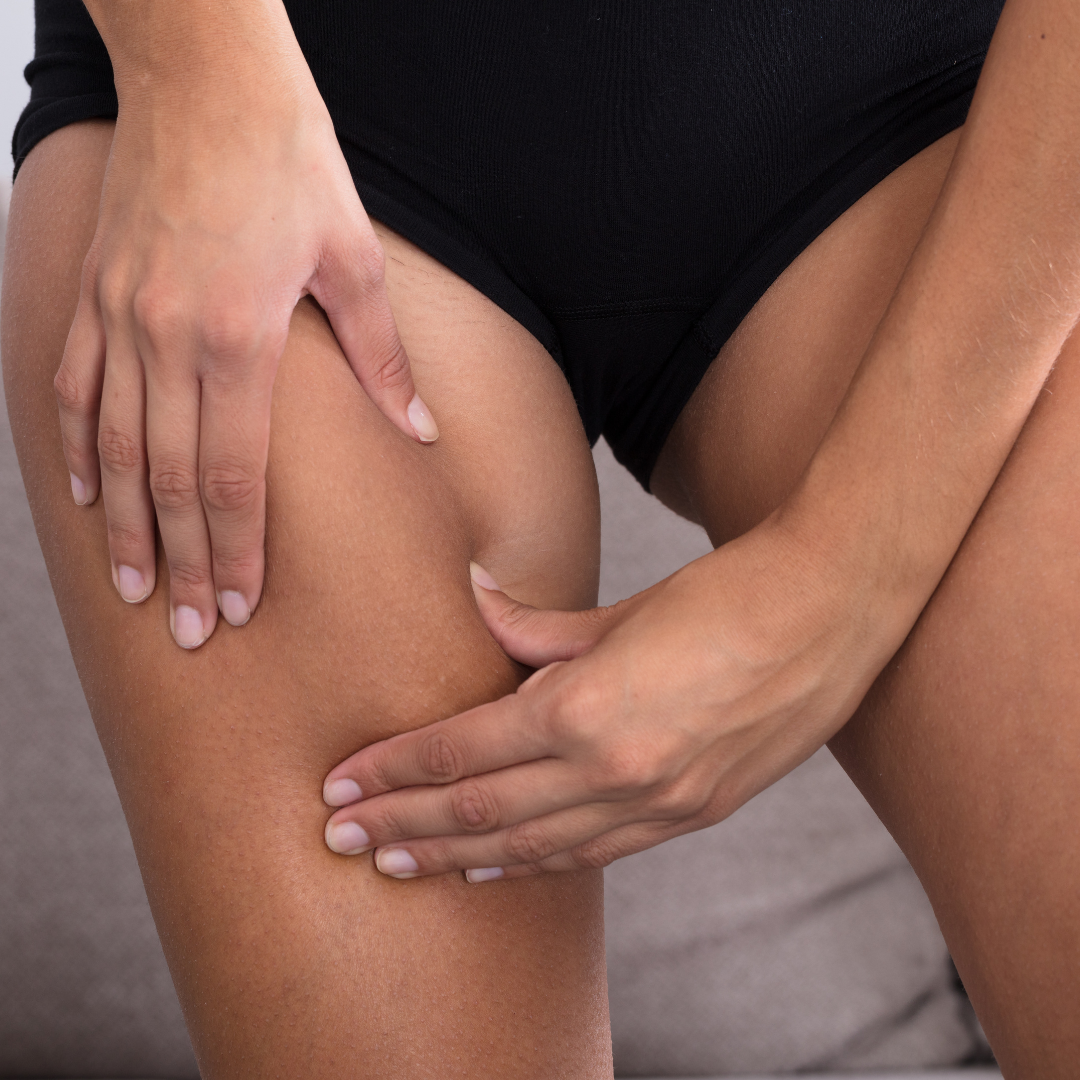
How To Avoid Cellulite?
Cellulite is a prevalent, harmless skin condition that affects the way your body stores fat. It can also cause dimpling and “orange peel” appearance on the skin, where skin flaps of the underlying tissue layers.
Cellulite can develop anywhere on your body but is often seen more prominently in the hips, thighs, and abdomen. If you want to avoid getting cellulite or have it less evident in any area of your body, it’s essential to understand what causes cellulite and how you can prevent it.
What is Cellulite?
Cellulite is those pesky little pockets of fat that form on a person’s hips, thighs, or butt. They’re super common and can be everything from genetics to being sedentary. It doesn’t discriminate; women across the world struggle with this unsightly issue every day.
Cellulite affects women far more frequently than it affects males. It appears in the majority of women after puberty. Women’s fat is in the thighs, hips, and buttocks, all of which are frequent cellulite-prone locations. Also, it becomes more common as people age and their skin lose suppleness.
The more you know about cellulite, though, the better chance you have at managing your situation. We’ll go over what causes cellulite, how you can avoid it, and its treatments.
Causes of Cellulite
The exact cause of cellulite is unknown. However, what is known is that cellulite develops in different ways. Cellulite occurs when fat cells push against other fat cells; this process can cause the outer layer of skin to weaken and create a dimpling effect.
Many factors may contribute to cellulite, such as genetics, gender, ethnicity, weight, and hormones. Also, weight increases could increase the size of adipocytes (or fat cells), resulting in more pressure on skin-folds such as the inner thighs and buttocks. Estrogen also plays a role where its levels can increase following pregnancy or menopause.
Tips to Prevent Cellulite
Preventing cellulite from happening to you is as easy as 1-2-3. You can avoid cellulite by following the tips below. Also, remember that we are unique and different. Results may vary from one individual to another.
Stay Hydrated
Cellulite can be made more visible by dehydration, so it’s essential to stay hydrated. Water flushes toxins out of your system, which can produce cellulite. Make a conscious effort to drink more water. For women, it is advisable to consume at least nine cups of water every day.
Eat Healthily
Eat a well-balanced diet and increase the number of carbs in a person’s diet to prevent the body from utilizing protein as energy after exercise, which may cause their sweat to smell like ammonia. You can find carbohydrates in whole grains, vegetables, fruits, and beans. Furthermore, if a person discovers that specific foods, such as fish or dairy, cause their sweat to smell like ammonia, they can cut back on or eliminate those foods from their diet.
Exercise
Specific workouts may aid in the tightening of the skin and help with cellulite. As a result, you may notice a decrease in cellulite. While exercise isn’t a failsafe approach to getting rid of cellulite on the thighs, it can help lessen its appearance by strengthening muscles and tightening the skin.
Support Detoxification
By lowering accumulated toxins that contribute to cellulite, detoxing your body may help you reduce cellulite. Through food and lifestyle changes, try to eliminate or drastically reduce the number of pollutants you consume. It includes refraining from smoking and drinking alcoholic beverages.
This procedure is supposed to increase blood and lymph flow, eliminate dead skin cells, and promote new cell growth. It can assist in detoxification and stimulate the neural system. For up to five minutes, gently smooth dry skin using a natural plant loofah or body brush. It’s preferable to do this before taking a bath or shower.
Treatment for Cellulite
Don’t worry if things go out of your hand because there are still ways to treat cellulite. The following are some of the best cellulite treatments that you can try.
Laser and Radiofrequency
These medical procedures combine tissue massage with radiofrequency technology, infrared light, and diode laser energy to cure cellulite. It’s also possible to employ heat and suction. Cellulase is a laser therapy that breaks up the stiff bands underneath the skin that cause cellulite. It may also cause your skin to thicken. After a series of treatments, improvements can be visible and can last for six months or longer.
Carboxytherapy
Carbon dioxide (CO2) gas is injected directly beneath the epidermis during this medical treatment. CO2 is not the same as carbon monoxide, which can be fatal. Carboxytherapy may cause discomfort during treatment as well as transient bruising.
Cryolipolysis
Cryolipolysis is a non-invasive therapy that freezes fat cells beneath the skin to reduce cellulite. Fat cells rupture as a result, and the body absorbs their contents. A notable reduction in cellulite may take three to four months.
Topical Treatment
Topical treatments can help minimize the appearance of cellulite, but the effects aren’t always permanent. To keep the results, you’ll need to use the product daily. Creams are supposed to tighten the skin, giving it a smoother and tighter appearance. They also add moisture, which can help with cellulite appearance.
By thickening the outer layer of skin, products containing 0.3 per cent retinol may help minimize cellulite’s appearance. To notice benefits, you’ll need to apply the cream every day for at least six months.
Takeaway
There is no magic pill for keeping cellulite away from you. You have to do things that will help you prevent or treat cellulite. However, always remember that having cellulitis doesn’t mean you are less beautiful. You are beautiful regardless if you have cellulite or not. Discuss your intended outcome and the actions you plan to take with your doctor, plastic surgeon, or dermatologist. They can assist you in determining the most appropriate treatment.



